Anand third at the Candidates 2016
It is said that the game of chess is getting younger and younger every day. But here is a 46-year-old man who not only fought for the top places in a grueling event like the Candidates, but was matching blow for blow against opponents nearly half his age. Vishy Anand provided us with some edge of the seat entertainment at the Moscow Candidates, finishing with 7.5/14 and a respectable third place. He went home richer by Euros 81,500! Here is an article which gives a summary about the tournament from the point of view of the Indian Champion.
Pictures by Amruta Mokal
“Bit of a roller coaster. I had some very good moments. In the end third is a good result, but I think I spoilt some really good chances. It could just have been a dream tournament. Then again you cannot pick and choose – you cannot just keep the wins and say the losses shouldn’t have happened. Mixed feelings but at least I will go back with something positive”, this is how Vishy Anand described his experience at the Candidates 2016. Truly, it was a complete roller coaster not only for him but for all the millions of his fans back home who were eagerly following each and every move of the fourteen games that he played at the event.
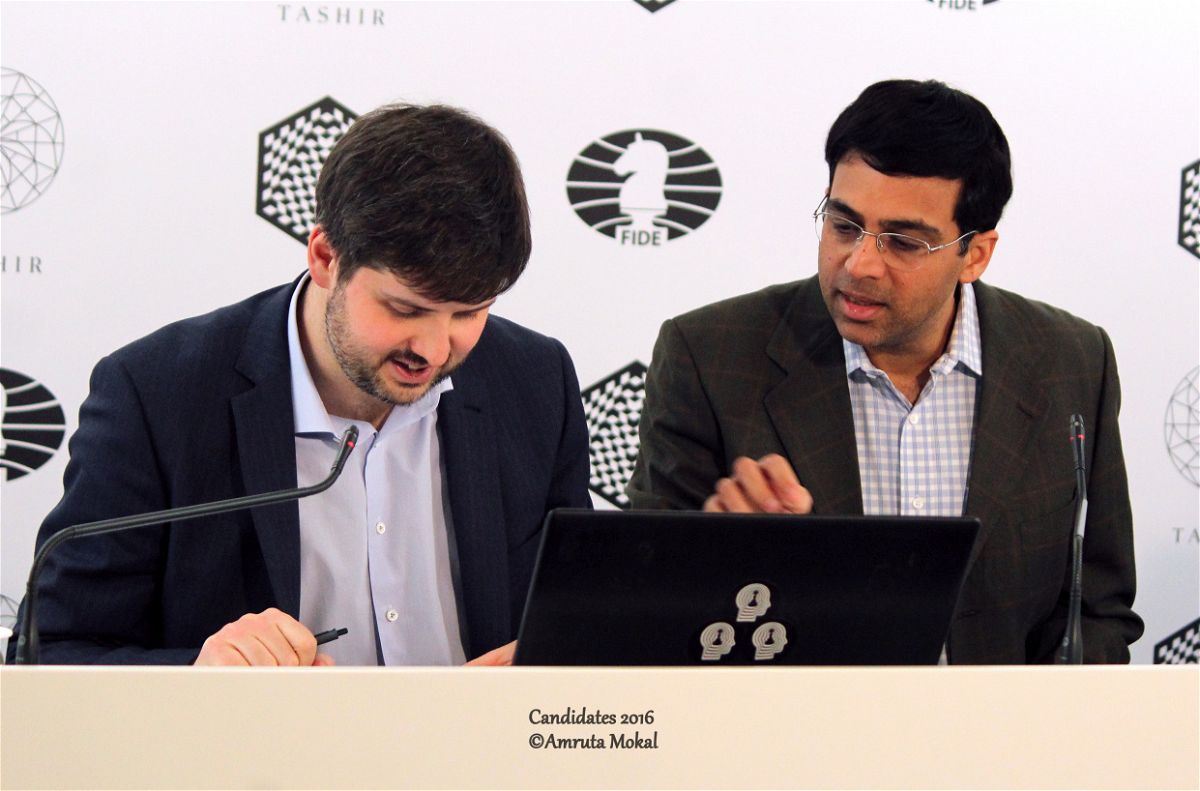
Anand finished with a score of 7.5/14 and had to settle for the third spot behind Sergey Karjakin and Fabiano Caruana. Karjakin beat Caruana in the last round to win the tournament and also earned the right to challenge Magnus Carlsen to a World Championship Match in November 2016. Vishy Anand scored one point less than Karjakin but was definitely the most uncompromising player at the event. He had the most number of decisive games. In such events, it is natural that competitors remain completely solid. For example, the Dutch talent Anish Giri finished with fourteen draws! Svidler had one win and a loss and Aronian had two each. But Vishy had seven decisive games – four wins and three loses! In a tournament that had 16 decisive games out of 56, Anand contributed nearly 45% of the non-drawn games.
And the analysis of his victories and defeats reveals a clear pattern. All the games Anand won were with the white pieces and all the ones that he lost were with the black! Something had really gone wrong with his black repertoire. If he could have limited the damage in that area, then there were excellent chances that he could have won the event. But as Anand said at the start, “You cannot pick and choose!”
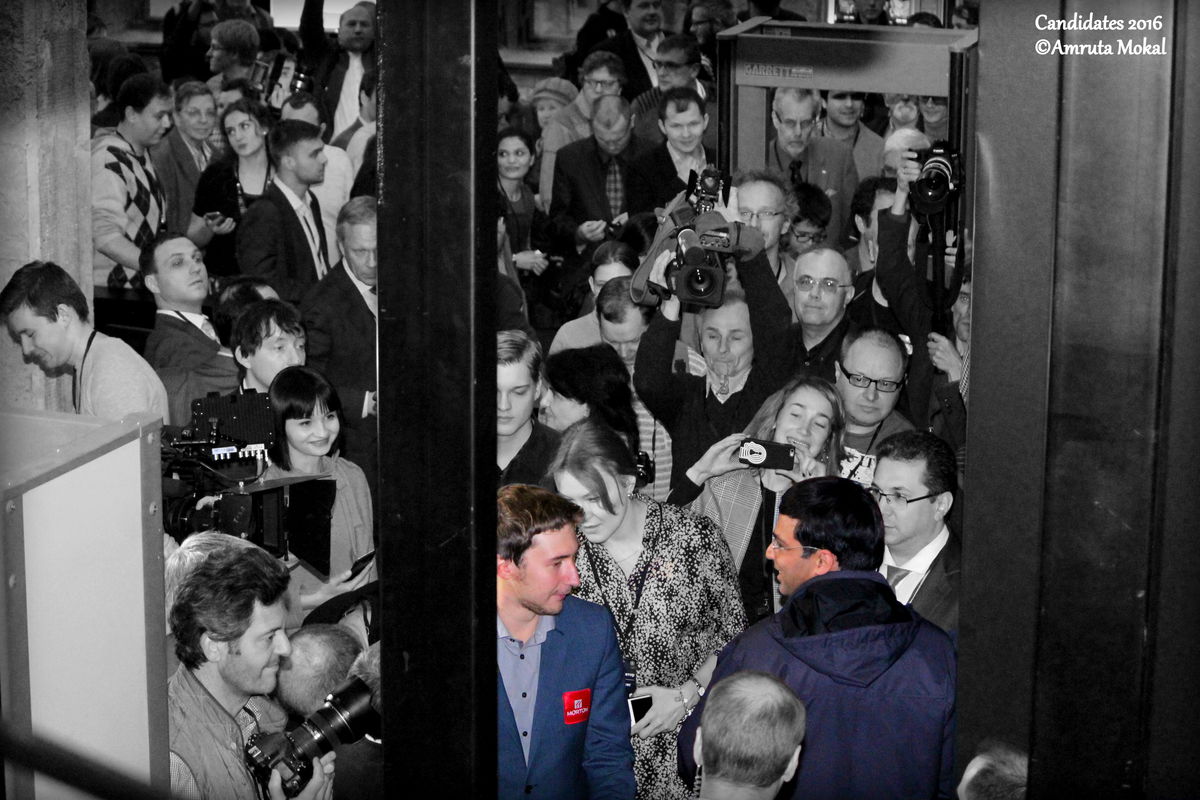
The tournament began on a high note for Anand as he won his first game against Veselin Topalov. In some ways this was the lucky break for the Indian champion as Topalov missed a relatively easy combination with 20…Bxf2+. This win was followed by solid draws against Aronian and Caruana in rounds two and three respectively. In the fourth round Sergey Karjakin played some sort of a positional masterpiece to get the better of the Indian Champion.

Of course, Vishy made some imperceptible errors but overall it was a smooth victory for the Russian. A loss to Sergey was followed by Anand not making great use of his white pieces. He made a quick draw with Hikaru Nakamura and was now on 2.5/5.
The sixth game turned out to be one of the most crucial moments of the tournament for Anand. Peter Svidler gave Anand a break from the Berlin and invited him to go into the main lines of the Ruy Lopez with 3…a6. This was just what Anand needed. In sublime attacking style he was able to mate Peter’s king in just 24 moves!
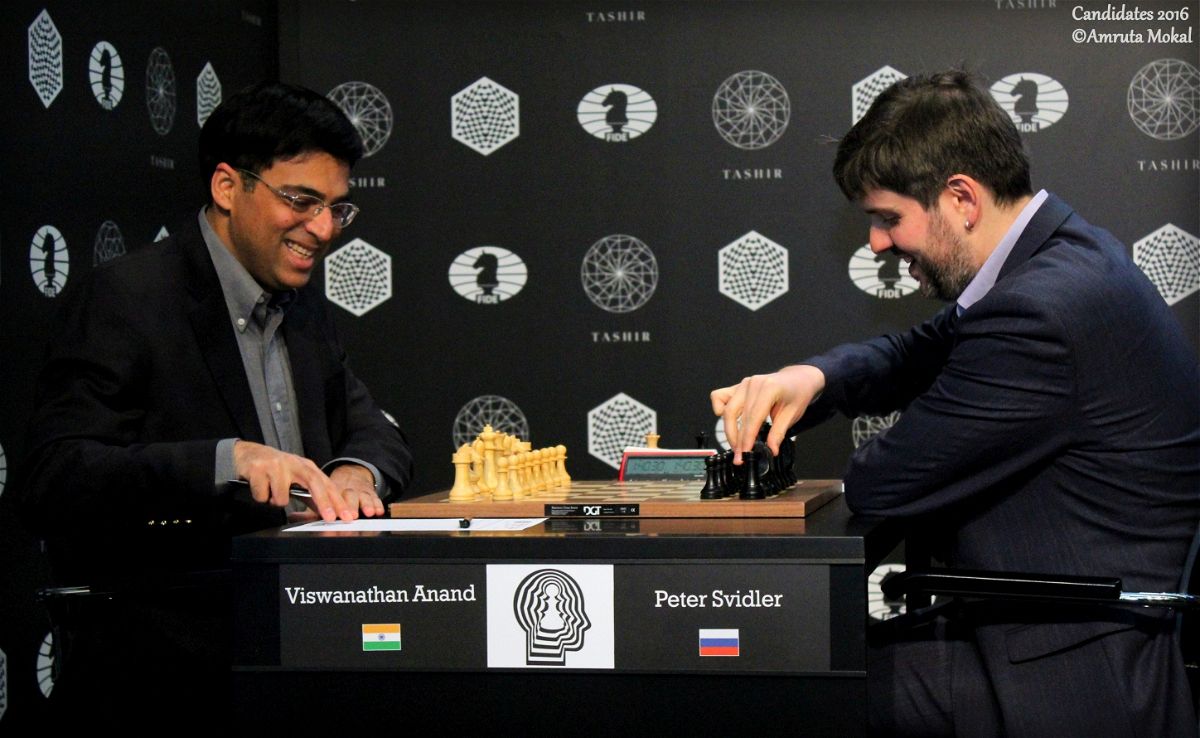
The first half ended on +1 with a draw against Anish Giri with the black pieces. A draw against Topalov kicked off the second half. And then came the endgame against Aronian which would have made even the great endgame expert Akiba Rubinstein proud. In free flowing style Anand was able to win the game and with +2 he joined the leaders after nine rounds.

A shock defeat to Fabiano Caruana in the tenth round was a huge blow to Anand’s chances, but as if nothing had happened, he came back the next day and played his best game of the tournament against Sergey Karjakin.
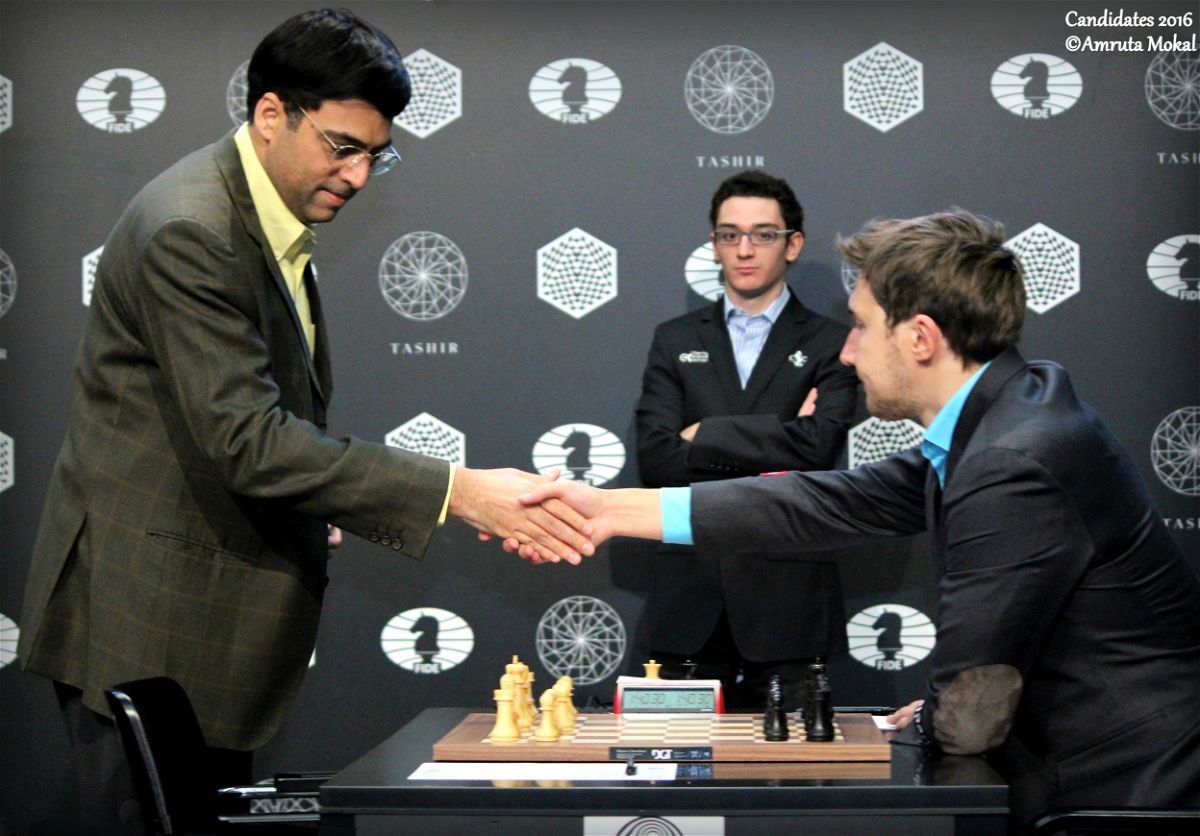
“When I started out, even I didn’t have any faith that I could win this ending!” was the way in which Anand described his technical brilliance against Karjakin. Vishy truly drew water out of stone and in an ending where it looked like he had no chances, Anand was systematically able to increase the pressure and win the game. Just when everyone had written him off, he was back again. I think this game really defined Anand’s fighting spirit at this event. To come back right on the next day, and beat not only the leader, but the guy who went on to win the tournament, was surely no mean feat.
In order to enjoy the analysis on your laptop (not for mobile users), click on the magnifying glass on the right top corner of the chess board given below. Use the keyboard arrow keys or the ones given below the chess board to play over the moves.
[Site "?"]
[Date "2016.03.24"]
[Round "11"]
[White "Anand, Viswanathan"]
[Black "Karjakin, Sergey"]
[Result "1-0"]
[ECO "C65"]
[WhiteElo "2762"]
[BlackElo "2760"]
[PlyCount "139"]
back to his Ruy Lopez, not fearing the Anti-Berlin.} Nf6 4. d3 Bc5 5. c3 O-O 6.
O-O d6 7. h3 {As Samuel Shankland explained in his annotations, this move is a
little bit slow because now Black can go back to e7 with his knight-rerouting
it to g6, and he is not afraid of d3-d4 because the e4 pawn hangs. Hence Re1
is the main move here. But Anand played this against Caruana and now tries it
over here again, so he doesn't really agree with the opening assessment and
instead is trying to blaze new paths.} Ne7 8. d4 Bb6 9. Bd3 d5 (9... Ng6 {
was played by Fabiano and after Qc2 it lead to a complex battle. Sergey goes
for the more combative approach.}) 10. Nxe5 $146 {This is the first new move
of the game. It was prepared by Grzegorz Gajewski who saw the dangers and
difficulties that lie for Black in this relatively sedate line.} (10. Nbd2 {
was played by Magnus Carlsen against Vladimir Kramnik.}) (10. dxe5 {was played
by Ivanchuk against Karjakin in 2012.}) 10... Nxe4 (10... dxe4 11. Bc2) 11. Nd2
Nd6 {The knight is well placed on d6.} 12. Nb3 c6 {Karjakin thought for a long
time for this move.} (12... Bf5 {was also possible and looks like the most
natural way to continue.} 13. Bf4 Bxd3 14. Nxd3 $14 {White has a small edge.})
13. Nc5 $5 {A very interesting move made quickly by Anand. It puts pressure on
the b7 pawn and to get rid of that pressure Black must give up one of his
bishops.} Ng6 14. Qh5 Bxc5 {A decision which cannot be made with a light heart.
The knights were irritating and Sergey thought it was a good deal to give up
his dark squared bishop.} 15. dxc5 Ne4 16. Bxe4 (16. b4 $6 Re8 $1 $15 (16...
Nxc3 17. Bb2 $13)) (16. Be3 {is also possible but after} Re8 17. Nxg6 hxg6 18.
Qd1 Qe7 {Black should be fine.}) 16... dxe4 17. Rd1 Qe7 18. Nxg6 {Anand is in
some sort of a must win scenario. To play this move shows great objectivity.
Of course the position is round about equal but with the control of the d-file
White has something to play for.} (18. Nc4 {would be ideal but it met with} f5
19. Nd6 b6 $1 $11 {immediately breaking the queenside structure. Black is
completely fine here.} (19... Be6 20. Bg5 $14)) 18... hxg6 19. Qg5 {When Vishy
made this move many people thought that the players would make a quick draw
and get back home early for a dinner. But instead the game went on for another
50 more moves!} Qxg5 20. Bxg5 {White's advantage lies in the fact that he
controls the d-file. Black on the other hand is a tad passive and the e4 pawn
will act as a hindrance for his bishop.} f6 (20... Be6 21. Rd4 f6 22. Bf4 f5
23. Rd6 Kf7 24. Rad1 $14 {is a much better version for White than what
happened in the game.}) 21. Be3 {White has the d-file but that is where his
advantages end. It is really surprising that Anand could win such a position
against a defender like Sergey Karjakin!} g5 (21... Be6 22. Rd4 f5 {Provoking
f5 helps to control the dark squares.} 23. Rd6 Kf7 24. Rad1 $14) 22. Rd6 Re8
23. Rad1 Be6 24. b3 Kf7 25. R1d4 $1 Bf5 26. a4 $5 {Anand mixes up his play. He
keeps the move g4 in reserve and starts his queenside expansion. Playing on
both wings is bound to create some difficulties for the opponent.} Re7 (26...
Ke7 27. g4 Be6 28. Rxe4 $16) 27. g4 Bh7 28. b4 Bg8 (28... a5 $5 {could have
been tried.} 29. b5 cxb5 30. axb5 a4 {And the a-pawn is pretty strong.}) 29. b5
Rc8 30. Rd7 (30. Rb4 Ke8 31. bxc6 Rxc6 32. Rxc6 bxc6 33. Rb8+ Kf7 $11) 30...
Rce8 (30... cxb5 31. Rxe7+ Kxe7 32. Rxe4+ Be6 33. axb5 $14) 31. b6 $5 {A
highly committal move but at the same time an excellent one. With the pawn
entrenched so deeply in enemy territory this is bound to create some
difficulties for the opponent.} a6 (31... axb6 32. cxb6 {gives White
additional options of creating a passer with a5-a6.}) 32. Rc7 Kf8 (32... Rxc7
33. bxc7 Rc8 34. Rd7+ Ke8 35. Rxg7 Kf8 36. Rd7 Ke8 37. Rd6 Ke7 38. Rd4 Rxc7 39.
Rxe4+ $14 {wins a pawn and although it may not be sufficient to win, it is
something to play for.}) 33. c4 Be6 {Some might argue that it was not
necessary for Sergey to give up the e4 pawn. But the pawn was anyway weak and
not worth clinging on to. Meanwhile White could have just improved his king.
So Karjakin thinks of giving up the pawn but simplifying the position.} 34.
Rxe4 Kf7 (34... Rxc7 35. bxc7 Ke7 $1 (35... Kf7 36. Bd2 $1 Rc8 37. Ba5 {
is quite a nice position for White to play!}) 36. f4 $14 (36. Bd2 $6 Kd7 $1 37.
Ba5 Kc8 38. Rd4 Bd7 $11) 36... gxf4 37. Bxf4 Kd7 38. Kf2 {Once again White's
position is preferable.}) 35. f4 $1 {Anand was on top of his game at this
point and made all the best move in the position.} Rxc7 36. bxc7 Rc8 $6 {
The important mistake of the game by Karjakin and that too at a critical
juncture. He has less time and there are still four moves to be made until the
time control.} (36... gxf4 37. Bxf4 $16) (36... f5 $1 {was the strong move
that would have secured Karjakin the draw.} 37. Re5 (37. Rd4 Rc8 38. fxg5 Rxc7
$11) 37... fxg4 38. f5 Bc8 39. Rxe8 Kxe8 40. hxg4 Kd7 41. Bxg5 Kxc7 $11) 37. f5
$1 Bd7 38. h4 $1 {Amazing accuracy by Anand. In time pressure he makes
Karjakin's task extremely difficult.} g6 (38... Rxc7 39. hxg5 fxg5 40. Rd4 $1 (
40. Bxg5 $6 Bc8) 40... Be8 41. Bxg5 $16) (38... gxh4 39. Rd4 $1 {With the idea
of Bf4.}) 39. Rd4 Rxc7 40. hxg5 fxg5 (40... gxf5 41. Bf4 $18) 41. Bxg5 Be8 (
41... Bc8 42. Rd8 $18 {With the threat of Bf4 decides the game.}) 42. f6 $1 Kf8
43. Bf4 (43. Rd8 Rd7 44. Rb8 Rd4 45. Bh6+ Kf7 46. g5 Rd7 47. Kf2 Rc7 48. Ke3
Rd7 49. Ke4 $18 {is just clearly winning.}) (43. Bh6+ $1 {was also possible.}
Kf7 44. Re4 $1 Rd7 45. Kf2 $18) 43... Rh7 (43... Rd7 44. Bd6+ Kf7 45. g5 $18 {
is just winning.}) 44. Kg2 Bd7 45. Bg5 $1 {A good decision by Anand, not
committing the move g4-g5 and not giving the f5 square for the bishop.} (45. g5
Bf5 {gives Black good defensive chances.}) 45... Be6 46. Rd8+ Kf7 47. Rb8 Bxc4
(47... Bxg4 48. Rxb7+ Kg8 49. Rb6 $18) 48. Rxb7+ Kg8 49. Rb8+ Kf7 50. Kg3 Ke6
51. Re8+ Kf7 52. Rc8 Bd5 53. Kf4 {The f6 pawn, the rook and bishop combine to
give White an easy win here. The a6 pawn is also quite weak.} Ke6 54. Re8+ Kd7
55. Ra8 Ke6 56. Re8+ (56. Rxa6 Rh3 {Gives Black huge counterplay.}) 56... Kd7
57. Re3 a5 58. Kg3 Rf7 59. Kf4 Rh7 60. Re1 Kc8 61. Kg3 Rf7 62. Re8+ Kd7 63. Ra8
Kc7 64. Kf4 (64. Rxa5 Kb7 {traps the rook. Anand would of course not go for
this.}) 64... Rd7 65. Bh4 Kb7 66. Re8 Bf7 67. Re4 Bd5 68. Re3 Bf7 69. Kg5 Ka6
70. Re7 {What a beautiful endgame by Anand! As Kasparov said, "Vishy was just
in a different league altogether in this game!"} 1-0
At 6.5/11, hopes of the Indian fans were as high as ever! Anand had not only won against Karjakin but had also shot back into the lead with Caruana. But his loss against Nakamura in the twelfth round was really first nail in the coffin and then the draw against Anish Giri effectively ended his chances for the gold. A quick draw against Svidler in the last round ended his tournament with 7.5/14 and third place.
The thing which makes Anand’s tournament special is the fact that in a field of players half his age he could keep his chances for the first place right until the very end! Everytime he was beaten, he got back on his feet and kept fighting. That is why he is a gem and that is exactly why he is the greatest chess player India has ever produced! Having the expectations of the entire nation on your shoulders and performing is never easy
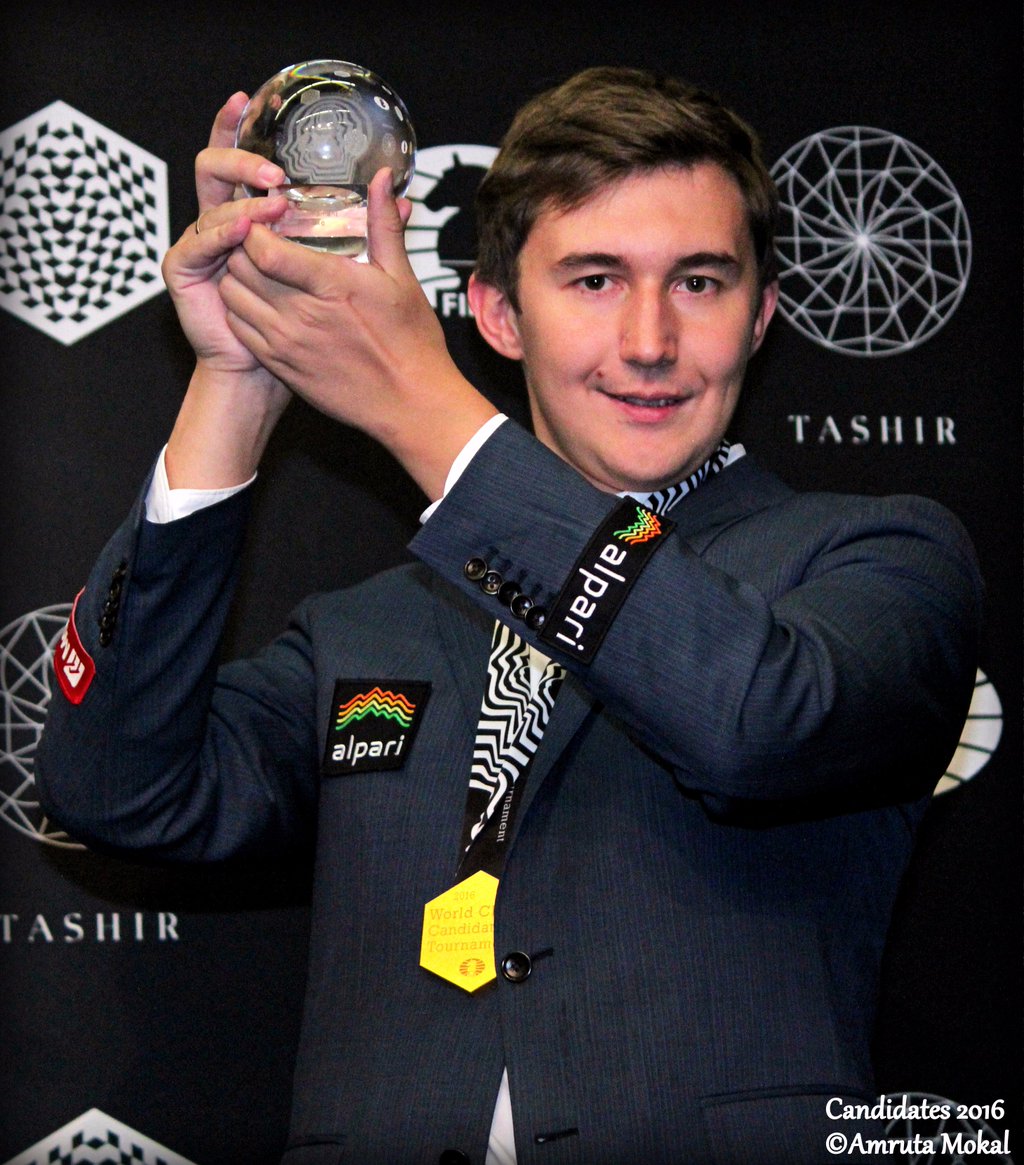
Congratulations to Sergey Karjakin who won the tournament. He will fight it out against Magnus Carlsen in a 12-game match in New York in November 2016 for the title of the World Champion. FIDE President Kirsan Ilyumzhinov has hinted that the match could take place in the Trump Towers! A heartbreak for Fabiano Caruana who lost the final game to Sergey Karjakin. Bobby Fischer remains the last American who played for the World title in 1972. (Note: one of our readers Sundararajan Ganesan corrected us - Bobby Fischer wasn't the last American to have played for the World title, it was Gata Kamsky, when he took on Karpov in 1996. At that time however the chess world was divided between PCA and FIDE with Kasparov being the PCA World Champion and Karpov being FIDE's.) Magnus Carlsen versus Sergey Karjakin would be an interesting World Championship Match, but as of now the Norwegian definitely looks like the favourite.
